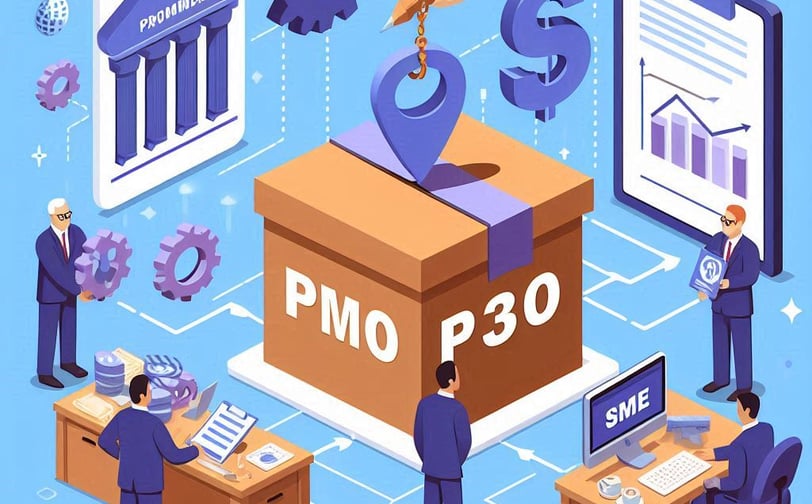We're an SME we dont need a PMO? Oh yes you do!
PMO's are seen as a function for very large organisations but, they have real value for SME's and can help provide governance structure and scalability as well as VALUE!
Garry Hart
1/3/20242 min read


A P3O (Portfolio, Programme, and Project Offices) model can be applied to a small-to-medium-sized enterprise (SME) on a small scale by focusing on the key principles of governance, flexibility, and scalability, ensuring the model is adapted to the SME’s specific needs and size. Here’s how a P3O could be effectively implemented:
1. Simplified Structure
- Centralized vs. Decentralized: A smaller SME doesn't need the complexity of multiple levels of portfolio, program, and project offices. A single, simplified Project Management Office (PMO) can handle all project and portfolio management functions. This could involve one or two people managing project oversight.
- Virtual or Part-Time PMO: For very small SMEs, it might be more practical to have a part-time or virtual PMO, where staff have dual roles (e.g., combining PMO responsibilities with their regular duties).
2. Focus on Governance and Standardization
- Lightweight Governance Framework: Establish basic governance frameworks to ensure consistency and visibility across projects. This includes project documentation templates, reporting standards, and basic risk management procedures.
- Scalable Processes: Develop processes that can scale with the size and complexity of the projects. Small projects may not need full program or portfolio-level governance, but as the SME grows, these can be adapted.
4. Support for Strategic Alignment
- Project Prioritization: Even in an SME, aligning projects with the business’s strategic objectives is crucial. The P3O can help evaluate which projects to undertake based on available resources and potential business impact.
- Portfolio Reporting: Simple dashboards or reports can be used to give leadership a clear view of project statuses, risks, and resource usage, helping them make informed decisions about priorities.
3. Resource Management and Capacity Planning
- Efficient Resource Allocation: In small SMEs, resources are usually limited, so the PMO’s role would focus on ensuring that resources are optimally allocated across projects. The P3O could provide a centralized view of resource availability and conflicts.
- Skill Development: The P3O can also ensure team members are trained and upskilled in project management methods, helping the SME improve overall project delivery capabilities.
5. Risk and Benefit Management
- Benefit Tracking: A small-scale P3O can assist in tracking the realization of benefits from projects, helping the SME understand what value is being derived.
- Risk Management: Implement lightweight risk management practices. The P3O can help identify and mitigate risks early by providing oversight and ensuring that each project adheres to basic risk management protocols.
6. Scalability and Flexibility
- Modular Approach: The P3O functions (portfolio management, program support, project governance) should be modular and introduced gradually as the SME’s project management maturity grows.
- Tailored Tools and Technology: SMEs may not need or afford enterprise-level tools. Instead, they can use lightweight project management software (e.g., Trello, Monday, or Microsoft Planner) that scales with the business.
7. Fostering a Collaborative Culture
- Communication Hub: In a small SME, the P3O can act as a communication and collaboration hub, ensuring that project-related information flows efficiently between teams and stakeholders.
- Stakeholder Engagement: As SMEs often have closer relationships with stakeholders, the P3O can manage stakeholder expectations through regular updates and feedback loops.
8. Benefits for SMEs
- Increased Efficiency: By centralizing project oversight, even small SMEs can ensure projects are completed on time and within budget.
- Better Decision-Making: Having a clear, consolidated view of all ongoing initiatives helps SMEs make strategic decisions about where to focus efforts.
- Scalable Growth: As the business grows, the P3O can scale with it, adding more sophisticated functions and structures without overburdening the company at an early stage.
